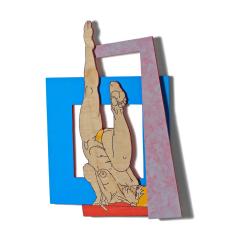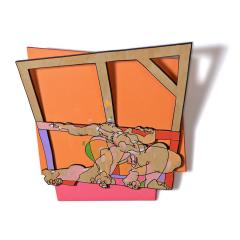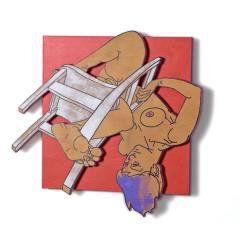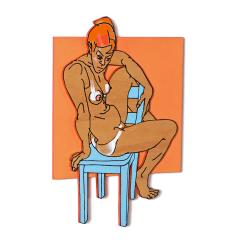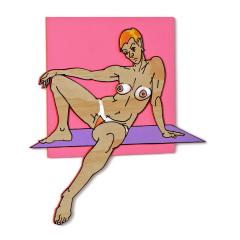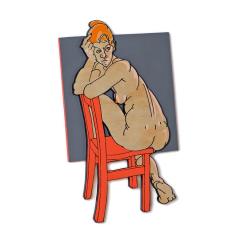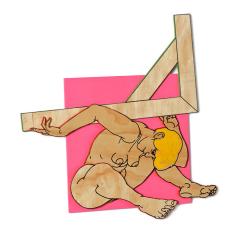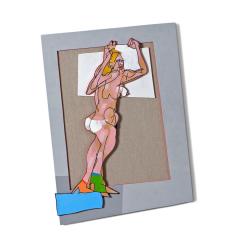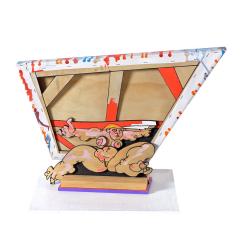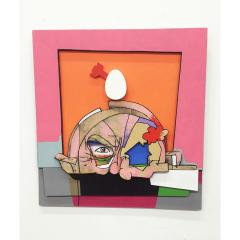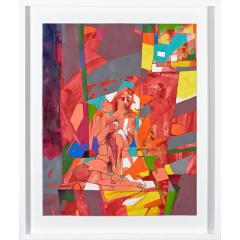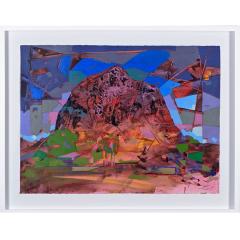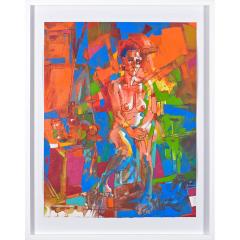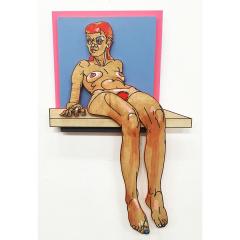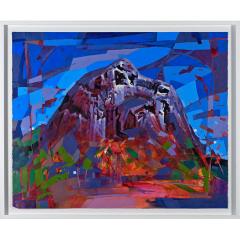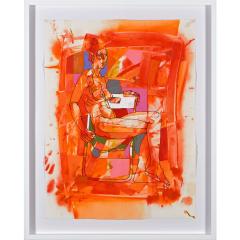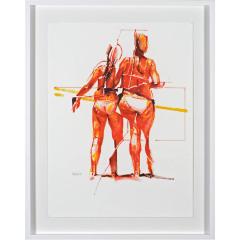Space & Place
Artists
Click orange artwork title to see pricing
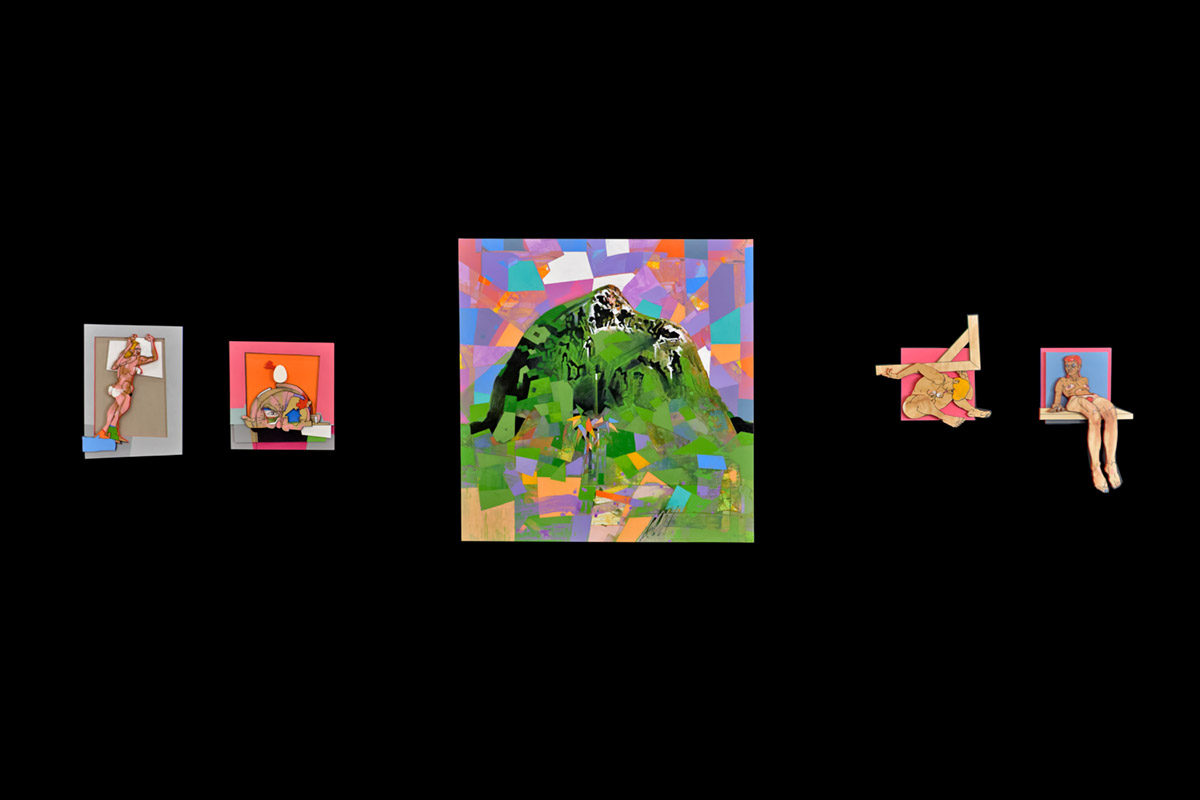
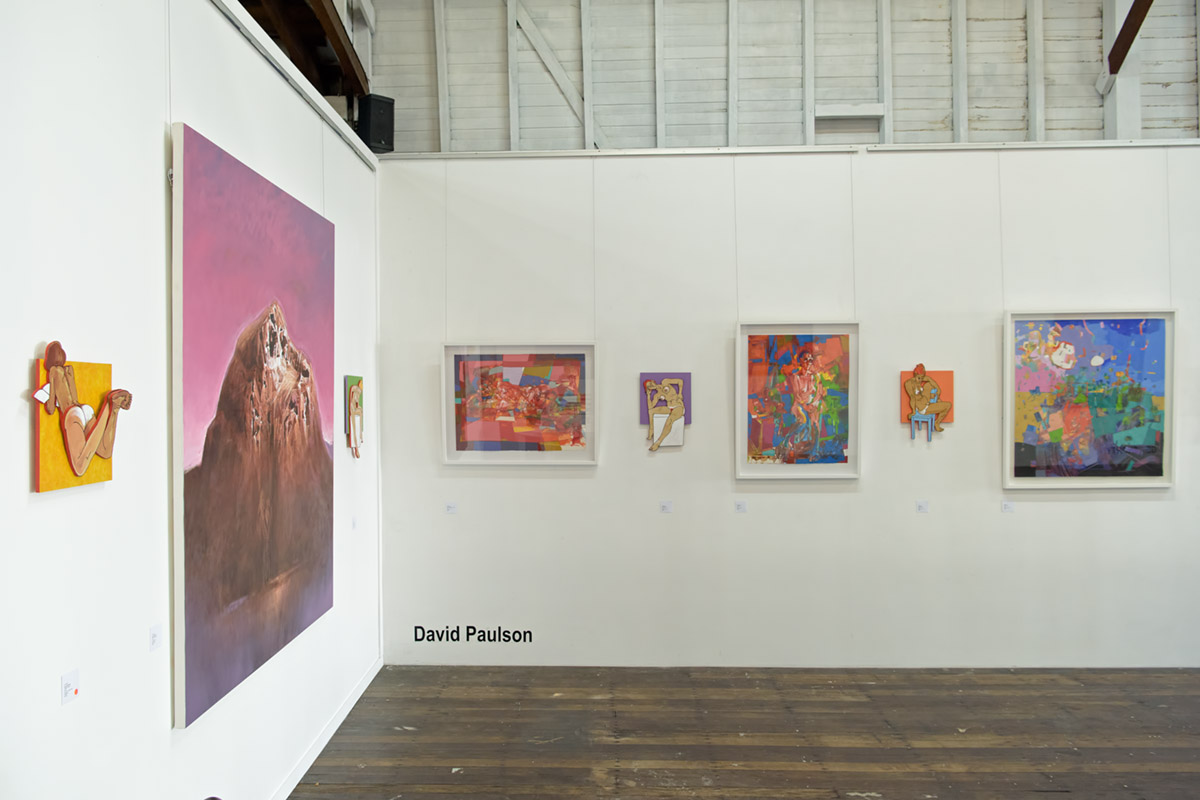
In works ranging from studio abstracted landscapes about the iconic Mt Tibrogargan, to various manifestations of life drawings and the studio space, to works that recall earlier social issue themed works, we find in the David Paulson of 2016 an artist who is both serious and playful, ironic and earnest. At first, the viewer might find these apparently contradictory qualities disorienting, since we are used to seeing artists produce exhibitions today that are tightly contained in subject and treatment. But it is in the diversity of this shown and the more elusive qualities that tie it together that we find insights into these particular works, as well as Paulson’s previous work. To more fully appreciate a Paulson composition, we must peer into the how as much as the what. A drawing or painting by Paulson is, for those who know his work, instantly recognisable, though often unexpected in appearance. What is it that makes it recognisable, and of what significance is this? Paulson’s background of disciplined training in drawing and painting, as well as commercial design, has produced a stunning mastery of these factors that he is grounded in - but also wary of. We find a restless searching for the particular collections of marks that will satisfy his eye - and a confidence that manifests as a willingness to destroy the obvious answer, or risk destroying the whole thing on the path to the compelling visual conclusion. We find marks that delight in this danger, that are testimony to his obsession with visual experience, that open up whole cascades of abstraction. Often at the completion, there remains the evidence of induced accidents or design problems the challenges Paulson creates for himself, the solutions to which provide the meat of the image. Light, space, character, physical gesture, human anatomy, and symbolism - these great themes in the tradition of visual art are recurring elements that Paulson’s eye revels in: simplifying, exaggerating and transforming them through his characteristic intensity of informed mark making. For example, in the plywood relief works based on life drawings (neither exactly sculpture nor drawing) a powerful awareness of space around the human form, contained in masterfully simple lines on a flat surface, has this paradoxical quality exploded into the z-axis with the thickness of the edge of the ply. On the page this sounds like it could be a mere cleverness - but in person we sense a hand guided by a childlike delight in vision that is supported by exceptional skill and understanding - and a subtly new experience of space and the human form emerging. In an earlier stage of his artistic production, Paulson aimed his capacity for visual drama at various injustices of Australian society, producing startling and often controversial pieces. These motivations were put aside in very different works such as those of the more recent Creek series, in which the delight in painting about light and space through layered marks sings hymns to nature, visual experience and a fascination with paint on a flat surface. And through all this, Paulson has always returned to the practise of life drawing, finding an anchor in this discipline and the immediacy of the ever compelling life model. In this show we see references to each of these important aspects of his long and productive career, but pared back towards particular visual qualities - and sometimes changed in meaning. For example, the plywood faces of existential angst in this show, that recall the earlier of the periods described above, are here more ironic than psychologically burdened, amused by our shared human frailty rather than seeking catharsis. Perhaps an undercurrent of peace arrived with Paulson’s creek. With all the variety of Paulson’s work, the penetrating intensity with which he sees, and the sublimation of this seeing into the moment by moment layering of marks is an important consistency, perhaps the most important. Marks made with a mixture of delight, authority and experimentation. It is in this, I think, that we experience the man - his uncompromising boldness, tempered with the discipline of gradual construction, the humble and serious commitment of a monk to the ritual of hours working in the studio, with its changing, dappled light and crystalline space but just as serious a commitment to playfulness and enjoyment of physical process (which perhaps end up being equally profound). I believe it is in these qualities that his magic truly lies, through which Paulson offers us subtle insights about the essential ingredients of living meaningfully.
Scott Breton, May 2016


